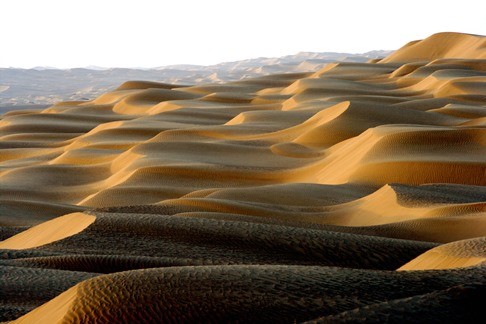It’s not going to be an easy road for the Chinese government. As early as now, problems are already popping up regarding the development of the Silk Road Economic Belt Initiative. Among these issues is the desertification of some areas along the ancient trade route.
According to experts, the government needs to formulate a plan that will successfully finish the construction of the Belt while sustaining the oases.
Included in these areas are the sand dunes located just outside Cele County in Khotan Prefecture. Once part of the world's second largest moving desert (and China's largest), Taklimakan, the desert is estimated to be as big as 10 soccer fields. Three times in history, this large patch of arid landscape has forced the town of Cele to relocate.
The main problem the desert poses to the construction of the new Silk Road is the threat of "invasion." Back in the day, a shelter forest protected Cele from the desert. The same was done in 2003 to 2006 to protect the 522-kilometer highway that traverses through Taklimakan.
"The shelter forest has curbed damage to the highway and improved the ecological environment," said Xu Xinwen, director of the CAS Taklimakan Desert Research Station.
To successfully build the new Silk Road, sustainable development must be realized by the government.
"The oases in Xinjiang are expanding," said Gui Dongwei, vice director of the Cele Research Station. "What we are focusing on is to keep a balance between oasis and desert."
Desert prevention and control technologies were proposed by experts to aid the construction of the new Silk Road. China has already such devices.
"China's sand control technologies are simple but effective with low resource consumption," said Ramadan Mohammed from the Egyptian Desert Research Station.
China's sand control gadgets were already introduced to countries in Africa and Central Asia to help with various environmental initiatives. Such technologies might be the answer to the country's desertification problem.



























